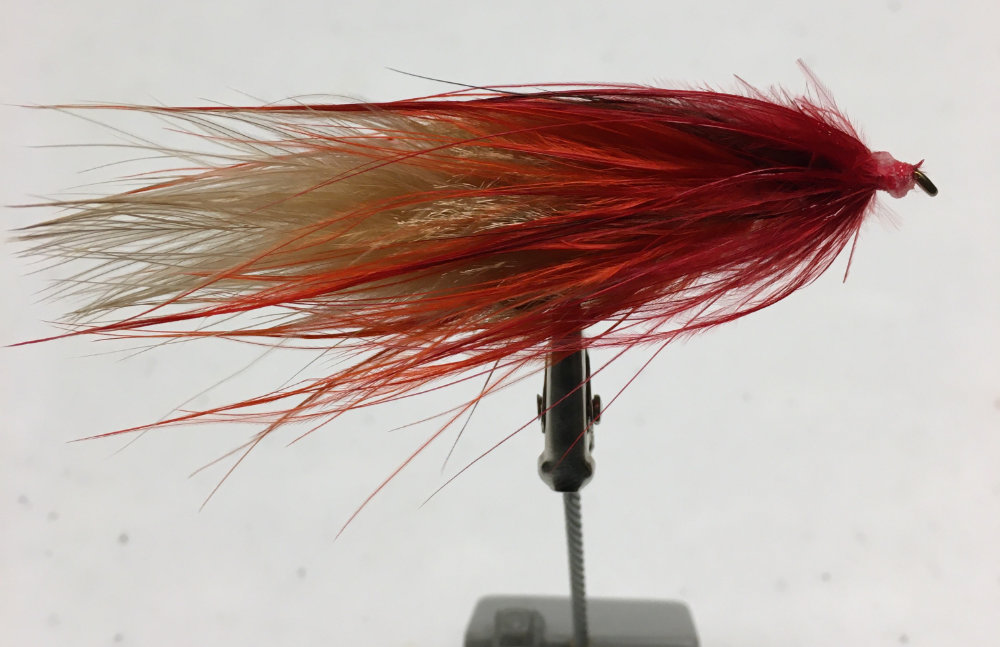By Don Fine
We hope that all of you who have been participating in our virtual fly tying sessions have been both enjoying tying the various fly patterns and advancing your tying skills at the same time. We are very encouraged to continue with this theme into the fall of 2020 and winter of 2021 with new patterns and new tying skills. We also want to thank those who sent positive comments and/or photos of the flies which you tied in the past several months. These photos will be a great incentive for other members, who take up tying artificial flies, as part of their passion for fly fishing.

The pattern chosen for September is an awesome (albeit easy-to-tie) streamer pattern, first described by Scott Sanchez (manager of JD High Country Outfitters in Jackson Hole, Wyoming) in American Angler, July/August 2018. Borrowing the description from Scott’s overview of his Leech-a-ma-call-it, the pattern includes no novel materials, rather it is a compilation of wet fly tying methods and materials of construction.
Nevertheless the pattern, due to the arrangement/rearrangement of its tying materials, has incredible life-like movement in the water for a variety of freshwater fish species. Furthermore, beginner and more advanced fly tiers will enhance their tying skills in learning the wrap-and-fold method for applying mylar-containing hackling materials in building the body of a streamer fly pattern.
Instructions for Tying the Leech-a-ma-callit
(based on the original pattern developed by Scott Sanchez, manager of JD High Country Outfitter, Jackson Hole, Wyoming)
Materials
Hook- streamer (large gap) size 2-8
Weight – 0.035 lead wire
Thread – 3/0 color to match collar
Tail- Marabou plume (tan or lighter in color than fly body)
Rear hackle – hackle flash (available thru Hook Shack)
Middle hackle – marabou plume (rust brown or darker in color than tail)
Collar- red schlappen
Tying Steps:
- Pinch down hook barb and place hook in vise.
- Wrap center portion of hook shank with lead wire securing both ends of the lead wrap with tying thread making a thread ramp at the front and another at the rear of the lead wrap.
- Tie in lighter colored marabou plume at the hook bend. Set the butts of the marabou plume against the rear of the thread wraps (which are to the rear of the lead wraps) to make an even underbody.
- Prepare the hackle flash and tie it in with the fibers facing back.
- Wrap the hackle flash over the rear ½ of the hook shank. Use the “wrap and fold method” to maintain the angle of the hackle flash fibers facing toward the bend of the hook. Secure the hackle flash at this point with the tying thread and trim off any extra.
- Prepare the darker marabou plume (by removing the fluffy/webby material at the marabou butt) and tie it in by its tip. Wrap it forward again using the “wrap and fold method”. Wrap over the leading edge of the hackle butts to reinforce the angle of the marabou fibers.
- Fold the schlappen feather and tie it in by the tip. Again using the “wrap and fold method” make about 3-4 wraps of schlappen to make a collar on the fly, stopping approximately ¼” to the rear of the hook eye (this space is for finishing the fly head). As before, wrap the leading edge of the hackle butts to reinforce the angle of the schlappen fibers. Then build a tapered thread head, whip finish and add head cement.
You must be logged in to post a comment.